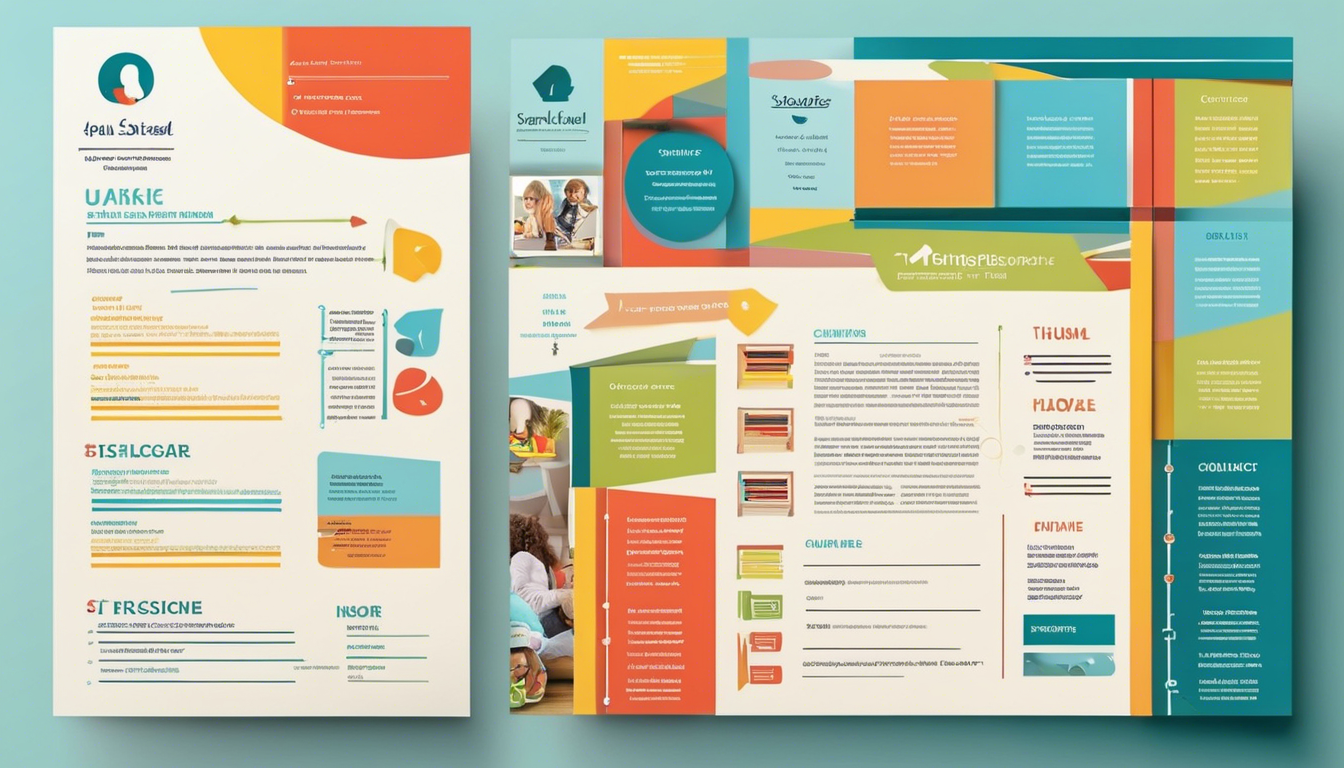In today's data-driven world, the demand for data analytics professionals is on the rise. As companies strive to make data-driven decisions, having the right skills and experience in data analytics can significantly boost your career prospects. However, before you can land that dream job in data analytics, you need to create a compelling resume that highlights your skills, experiences, and accomplishments.
This article will provide you with tips for crafting a winning data analytics resume. We will explore the key sections that should be included in your resume, discuss formatting and design tips, and provide guidance on crafting compelling bullet points and showcasing data analytics projects.
Introduction of Data Analytics
Data Analytics is the process of examining data sets to draw conclusions about the information they contain, with the aid of specialized systems and software. It involves techniques and concepts from multiple disciplines, including statistics, computer programming, operations research, and mathematics.

Required Skills for Data Analytics
- Statistical and Quantitative Analysis: Strong knowledge of statistical concepts, methods, and techniques such as hypothesis testing, regression analysis, and predictive modeling.
- Programming and Coding: Proficiency in programming languages like Python, R, SQL, and data manipulation tools like pandas, NumPy, and dplyr.
- Data Wrangling and Munging: Ability to clean, transform, and prepare raw data for analysis by handling missing values, removing duplicates, and formatting data.
- Data Visualization: Skills to create effective visualizations like charts, graphs, and dashboards to communicate insights from data using tools like Tableau, Power BI, or Matplotlib.
- Critical Thinking and Problem-Solving: Analytical mindset to identify patterns, trends, and relationships within data, and to draw meaningful conclusions.
- Communication and Storytelling: Ability to effectively communicate findings and insights from data analysis to both technical and non-technical audiences.
Tools and Technologies for Data Analytics
- Programming Languages: Python, R, SQL, and others.
- Data Manipulation and Analysis Tools: pandas, NumPy, dplyr, SciPy, and scikit-learn.
- Data Visualization Tools: Tableau, Power BI, Matplotlib, Seaborn, and D3.js.
- Databases and Data Warehouses: SQL databases (MySQL, PostgreSQL, Oracle), NoSQL databases (MongoDB, Cassandra), and data warehouses like Amazon Redshift or Google BigQuery.
- Big Data Technologies: Hadoop, Spark, Kafka, and other tools for processing and analyzing large datasets.
- Cloud Platforms: Amazon Web Services (AWS), Google Cloud Platform (GCP), Microsoft Azure, and others for cloud-based data storage, processing, and analysis.
Qualifications for Data Analytics
- Bachelor's or Master's degree in a quantitative field like Statistics, Mathematics, Computer Science, Economics, or Engineering.
- Relevant work experience in data analysis, business intelligence, or a related field.
- Certifications in data analytics tools, programming languages, or specific domains like marketing analytics or financial analytics can be beneficial.
- Strong portfolio showcasing projects and real-world experience in data analysis and visualization.
It's important to note that the specific skills, tools, and qualifications may vary depending on the industry, organization, and the level of the data analytics role (entry-level, mid-level, or advanced).
Overview of a Data Analytics Resume
Importance of a well-crafted Data Analytics Resume
A well-crafted data analytics resume is essential for several reasons.
Firstly, it serves as a marketing tool to showcase your skills, experiences, and accomplishments to potential employers. It is your chance to make a strong first impression and stand out from the competition.
Secondly, a data analytics resume allows employers to quickly assess your qualifications and determine if you are a good fit for their organization. Employers receive a large number of resumes for each job opening, so it is crucial to make your resume concise, clear, and easy to read.
Understanding the basic structure and components
A typical data analytics resume follows a basic structure and includes several key components. These components include contact information, a summary or objective statement, skills and expertise, education and certifications, work experience, and additional sections (if applicable).
Understanding the purpose and content of each section will help you create a resume that effectively showcases your qualifications and experiences.
Key Sections to Include in a Data Analytics Resume
Contact Information
The contact information section should include your full name, phone number, email address, and LinkedIn profile (if applicable). Make sure to use a professional email address and include any relevant online profiles, such as a personal portfolio or blog, that highlight your expertise in data analytics.
Summary or Objective Statement
The summary or objective statement provides a brief overview of your skills, experiences, and career goals. It should be tailored to the specific job you are applying for and highlight your unique selling points. A well-crafted summary or objective statement can capture the attention of hiring managers and encourage them to read further.
Skills and Expertise
The skills and expertise section is vital for a data analytics resume. It is the place to showcase your technical and analytical skills that are relevant to the job. This section should be organized into two subsections: technical skills and analytical skills.
Technical Skills
List the technical skills you possess that are specific to data analytics, such as proficiency in programming languages, statistical software, databases, and data visualization tools.
Analytical Skills
Highlight your analytical skills, such as problem-solving, critical thinking, and attention to detail. Employers value candidates who can analyze complex data sets and extract actionable insights.
Education and Certifications
The education and certifications section should include your highest level of education, academic qualifications, and any relevant certifications or training programs you have completed in the field of data analytics. Include the name of the institution, degree or certification earned, and the year of completion.
Work Experience
The work experience section is where you can highlight your relevant professional experience in data analytics. Include the company name, job title, and dates of employment for each position. It is essential to focus on quantifiable achievements and highlight your contributions to previous projects.
Relevant Data Analytics Projects
Include specific data analytics projects you have worked on that demonstrate your skills and experiences. Describe the project objectives, the data analysis techniques used, and the insights or recommendations derived from the analysis.
Accomplishments and Achievements
Highlight any accomplishments and achievements related to data analytics. This could include cost savings, revenue growth, process improvements, or any other measurable impact you have made through your data analytics work.
Additional Sections (if applicable)
Depending on your experiences and career goals, you may include additional sections in your data analytics resume. Some possible additional sections include:
- Professional Associations and Memberships: Include any professional associations or memberships related to data analytics, such as the Data Analytics Association or relevant industry-specific groups.
- Publications or Research Work: If you have published any articles or conducted research in the field of data analytics, include a section to highlight your contributions.
- Volunteer Experience: If you have volunteered for data analytics projects or worked on data-related initiatives, include this experience to showcase your commitment to the field.
Build Your Data Analytics Resume With TalenCat CV Maker
TalenCat CV Maker is an AI-powered resume editor that provides a wide variety of built-in resume modules to maximize the customization of your resume. With TalenCat CV Maker, you can build your resume with various content modules:
- Basic Information
- Self-Summary
- Profile
- Education Information
- Work Experience
- Project Experience
- Languages
- Awards
- Interests
- Volunteer Experience
Also, you can add a custom section to customize more unique content. In each section, you can even utilize generative AI to help you improve the efficiency and quality of content.

If you want to write an effective data analytics resume, TalenCat CV Maker is definitely the best option for you.
Formatting and Design Tips for a Data Analytics Resume
Creating a well-formatted and visually appealing resume is crucial. Follow these formatting and design tips to make your data analytics resume stand out:
Choose an appropriate resume template and font
Select a clean and professional resume template that is easy to read and navigate. Use a font that is legible and professional, such as Arial, Calibri, or Times New Roman. Stick to a consistent font size (10-12 points) throughout the document.
Organize content using bullet points and headings
Organize your resume content using bullet points and headings to enhance readability. Use clear and concise language to describe your skills, experiences, and achievements. Start each bullet point with action verbs to make your accomplishments more impactful.
Utilize white space effectively
Leave sufficient white space around the content to enhance readability and create a visually appealing resume. Avoid cluttering the page with too much text or excessive formatting. Use margins, spacing, and section dividers to create a well-structured and balanced layout.
Proofreading and editing for clarity and consistency
Proofread and edit your data analytics resume carefully to eliminate any grammatical errors or typos. Ensure that your resume is consistent in terms of formatting, font usage, and alignment. Ask a friend or colleague to review your resume for any feedback or suggestions.
Crafting Compelling Bullet Points for Data Analytics Resume
Crafting impactful bullet points is essential for capturing the attention of hiring managers. Here are some tips for creating compelling bullet points for your data analytics resume:
Utilizing action verbs and specific metrics
Start each bullet point with an action verb to make your accomplishments more dynamic and engaging. Use action verbs such as "analyzed," "developed," "implemented," "optimized," or "validated." Additionally, quantify your achievements whenever possible by including specific metrics, such as the percentage improvement in process efficiency or the amount of cost savings achieved.
Quantifying achievements and impact
Quantify your achievements to demonstrate the value you have brought to previous employers. For example, instead of saying "Streamlined data analysis process," say "Streamlined data analysis process, resulting in a 20% reduction in processing time and cost savings of $50,000 annually."
Tailoring bullet points to highlight relevant skills and experiences
Tailor your bullet points to highlight the skills and experiences that are most relevant to the job you are applying for. Review the job description and identify the key requirements. Use your bullet points to showcase how you meet those requirements through your previous work experiences.
Showcasing Data Analytics Projects on a Resume
When showcasing data analytics projects on your resume, focus on projects that are relevant and impactful. Use the STAR method (Situation, Task, Action, Result) to structure your project descriptions:
Identifying relevant and impactful projects to include
Select data analytics projects that demonstrate a range of skills and experiences. Choose projects that align with the job requirements and highlight your ability to solve problems, analyze data, and derive meaningful insights.
Describing projects using the STAR method
Use the STAR method to describe your data analytics projects:
- Situation: Describe the context and background of the project.
- Task: Explain the specific task or objective of the project.
- Action: Detail the actions you took to analyze the data and derive insights.
- Result: Highlight the outcomes and impact of the project, such as cost savings, revenue growth, or process improvements.
Conclusion
Crafting a winning data analytics resume is essential to stand out in the competitive job market. By following these top 10 tips, you can create a compelling resume that highlights your skills, experiences, and accomplishments in the data analytics field. Remember to tailor your resume to each job application and continuously update it as you gain new skills and experiences. Good luck in your data analytics career!




